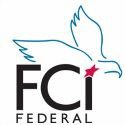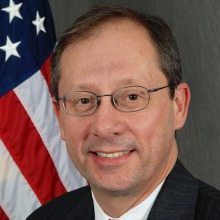
Most days, the Nysmith School in Herndon, Va. is a preparatory school for pre-kindergarten through eighth grade students founded in 1983 by Carol Nysmith. Johns Hopkins University ranked the school among the top ten Virginia schools for the talented in a 2009 city talent search and the school today touts small class sizes as well as low student to teacher ratios.
But this Saturday, March 8 the school will open its doors to more than K-12 students, parents, education, non-profit and STEM industry representatives for WashingtonExec’s inaugural STEM Symposium.
The more than 800 expected attendees will gather for the all-day conference in efforts to create a space for “bringing students and industry together” to battle the dwindling STEM pipeline — a skill-set scarcity problem currently agitating the country’s government and industry leaders.
While federal and government contracting agencies critically depend on high-skilled STEM proficient individuals for progress and innovation, present U.S. Education Department statistics anticipate less than 20 percent of high school students will this year demonstrate a simultaneous proficiency and interest in the skill-set.
The STEM Symposium’s planned activities — a lineup which includes exhibits, speakers and three panel talks led by industry experts — will afford students, parents and professionals alike the opportunity to establish critical relationships in efforts to arouse earlier interest in STEM among students to stave off some of the younger disinterest in the subject matter.
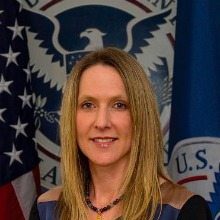
Among the featured speakers are Ann Barron-DiCamillo, the director for the U.S. Computer Emergency Readiness Team (US-CERT) and assistant deputy director for the National Cybersecurity and Communications integration Center at the Homeland Security Department and Google’s public sector Chief Technology Officer Michele Weslander Quaid, an Innovation Evangelist.
The two females will speak on “Industry/Government Perspective: Workforce Needs and Solutions” in the symposium’s first panel, moderated by Rob Zitz — the senior vice president and chief systems architect for Leidos’s National Security Sector.
Barron-DiCamillo leads efforts to improve the country’s cybersecurity posture and cyber information sharing as well as manages cyber risks. Before her time at DHS she spent time at the Defense Information Systems Agency (DISA). Barron-DiCamillo in 2013 ran more than 960 miles — a record she hopes to break this year by reaching the 1K mark.
Weslander Quaid joined Google in 2011 but spent her year’s prior working in industry as an image Scientist and Chief Engineer until 2002 when the US Government recruited her to work in the national security community. WashingtonExec interviewed her in February about her interest in fostering STEM involvement among youth.
Zitz will moderate the panel about the government’s STEM dependence. Zitz’s previous posts include work with the CIA, NGA, NSA, NRO, Secret Service, and the Army’s Delta Force. The federal contracting community recognizes him as “the change agent” for his adeptness at articulating vision during times of change and fulfilling clients’ needs.
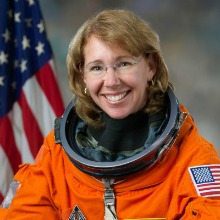
Dr. Padhu Seshaiyer, Director, STEM Accelerator Program, College of Science, Department of Mathematical Sciences, George Mason University (GMU), and SyApps, LLC CEO Bala Sundar will lead the second symposium panel titled “The Workforce of Tomorrow are your Kids Today”.
Seshaiyer is a tenured professor of Mathematical Sciences at GMU whose research interests lie in scientific computing, computational mathematics, computational biomechanics and STEM education. He has initiated a slew of educational programs to foster STEM interest among students and teachers — a trend he’s continuing with his involvement with the WashingtonExec STEM Symposium.
Sundar prior to launching SyApps, LLC spent twelve years consulting on process and system solutions and strategy with both PricewaterhouseCoopers and IBM Global Consulting. He’s a member of the Board to O2iD Inc — an authentication service provider based in Plano, TX.
The panel is set to be moderated by Ed Swallow, the Vice President, Business Development, Civil Systems Division, Information Systems Sector for Northrop Grumman Corporation. Swallow chairs WashingtonExec’s STEM Council and prior to his role leading business development activities across his division at Northrop Grumman served with the Air Force Reserve.
Zitz will moderate the symposium’s final panel about “Best Practices Across the K-12 Pipeline for STEM Career Choices” on which former NASA astronaut, Dr. Sandy Magnus, now an executive director of the American Institute of Aeronautics and Astronautics (AAIA), and Archis R. Bhandarkar, a senior at Thomas Jefferson High School for Science and Technology (TJHSST) will speak.
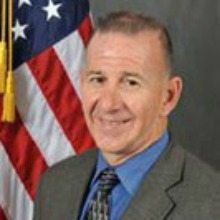
Magnus will shed light on best practices and likely reference her time flying in space on the 2002 STS-112 shuttle mission. Magnus most recently journeyed to space in 2011 aboard the STS-135. While at NASA she worked with the groups in the international community spending time in Russia, Brazil, and collaborating on projects with the European Space Agency as well as the National Space Development Agency of Japan.
Bhandarkar is an advocate for STEM who last year qualified as a Siemens Regional Finalist for his research in computational biomechanics. Bhandarkar is also a USA Biology and Physics Olympiad Semifinalist and graduated from Nysmith School. He encouraged students in a 2013 WahsingtonExec interview to never cease to explore and question the world around them.
Lastly, the event will be co-chaired by Zitz and Ted Cope, the Director for basic and applied research at the Geospatial-Intelligence Agency (NGA). Cope in his role is responsible for conceptualizing, communicating and exploring strategies for conducting business, development and applied research to support the expansion of science and technologies in areas ranging from geophysics to geodesy and photogammetry.
To register for the event and for more on the symposium’s various sponsors and exhibitors, please reference the STEM Symposium website.


